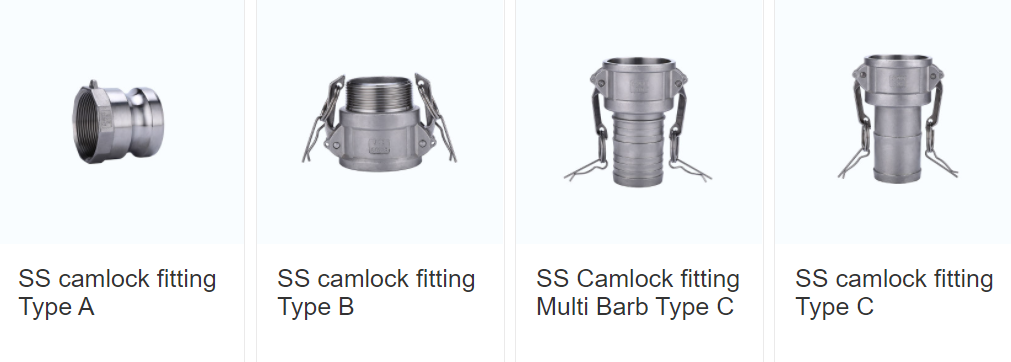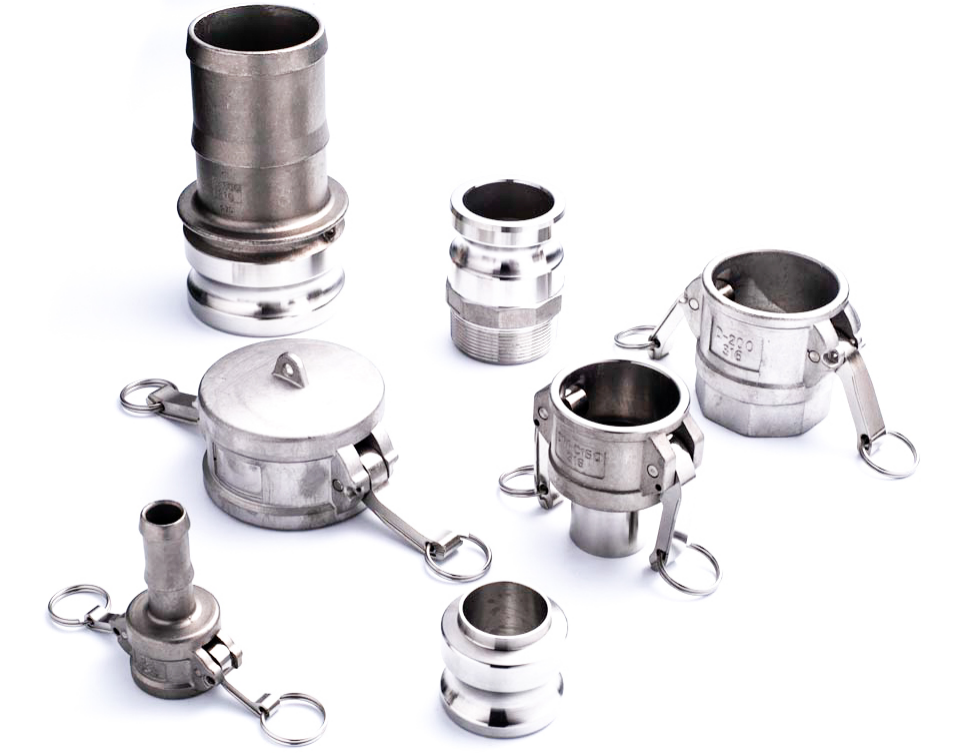Aluminum Vs. Stainless Steel Camlock Fittings: The Difference that Matters
The Camlock fittings might be composed of various materials such as stainless steel, aluminum, brass, or even plastics. Camlock fittings with these materials have their specified properties suitable for a certain kind of use in a particular industry. While talking about different materials for Camlock fittings, we will talk about the difference between stainless steel Camlock fittings and aluminum Camlock fittings. Based on this comparison, you can conveniently ascertain which one of the materials is suitable for serving your cause. So, let’s move on.

What is Aluminum Camlock and Its Features?
Aluminum is one of the broadly used materials across the globe utilized in diverse industries. Likewise, the role of aluminum in Camlock fittings manufacturing is also pivotal. The standard A-A-59236 or EN14420-7 delivers an aluminum cam. Its size can go from 1/2″ to 8″. Along the same lines, here are some of the critical explorations regarding features of aluminum Camlock Fittings:

- Strength
The strength of the Camlock fittings is directly related to its parent material. Aluminum is a light-in-weight and robust material, and its strength-to-weight ratio is also high. Thus, when it comes to combining strength and light-weightiness, aluminum Camlock fittings appear to be ideal.
- Corrosion Resistance
When it is about the rusting of metal, aluminum is considered quite a safe material. There remains a thin protective layer on the material in the aluminum oxide that protects it against corrosion. But this shield is only protective against a few of the reasons for corrosion. Otherwise, aluminum Camlock fittings’ open use might fall prey to corrosion.
- Malleability
Camlock fittings of aluminum have a clear advantage over stainless-steel fittings if measured in terms of malleability. Aluminum is more malleable and elastic than stainless steel and offers more intricate spinning. Consequently, when a Camlock fitting is required with straight and deep walls, aluminum is preferred. It enjoys the benefit of fast connection and adaptable dismantling.
- Cost
Aluminum Camlock fittings are usually cheaper than stainless steel Camlock fittings. Therefore, the aluminum Camlock fittings can be used without any concern when the budget is a problem.
What is Stainless Steel Camlock and Its Features?
Compared with aluminum, the use of stainless steel is more significant. Due to its diversified and suitable properties, stainless steel for manufacturing Camlock fittings is more effective than aluminum. Stainless steel Camlock fittings are delivered by standard A-A-59326 or EN14420-7. Here are the salient features of stainless steel Camlock Fittings:
- Strength
Although both stainless steel and aluminum are strong materials, the strength of stainless steel Camlock fitting is matchless. Subsequently, when there is high pressure, more considerable impact resistance, and more significant stress, the stainless steel Camlock fittings are ideal.
- Corrosion Resistance
Stainless steel Camlock fittings have excellent corrosion resistance properties. At the same time, stainless steel has an upper edge over aluminum and is partially composed of chromium. The presence of chromium provides stainless steel with an invisible protective shield against corrosion. When stainless steel rusts, the protective layer burns of it. In short, we can say that stainless steel Camlock fittings are safer than aluminum fittings against corrosion.
- Malleability
The hardness, sturdiness, toughness of stainless steel is more significant than aluminum. It cannot be brought to desired dimensions by pushing or any other method unless it carks. Accordingly, when a modified Camlock is required with deep and straight walls, stainless steel cannot be used as a material because its malleability is relatively low. However, aluminum is preferred here. But note here that stainless Camlock fittings are convenient and easy to install.
- Cost
It is the reason that stainless steel Camlock fittings are a bit more expensive than aluminum Camlock fittings. Nevertheless, stainless steel can also be purchased at a reasonable price.
How Do They Compare?
Inarguably, aluminum, as well as stainless steel both, are excellent materials. As far as the different features are concerned, stainless steel Camlock fittings have a clear edge over aluminum fittings in strength and corrosion resistance. However, aluminum fittings are better in terms of cost and malleability. Furthermore, though the durability of both Camlock fittings is good, stainless steel Camlock fittings possess the ability to serve for more time.
Apart from this, aluminum Camlock fittings can be utilized for rubber hoses, PVC pipes, etc. They are suitable for transporting various fluids like gasoline, kerosene, heavy oil, mud, water, acid, saltwater, and alkali. On the other hand, stainless steel Camlock fittings are appropriate for conveying seawater, hydraulic oil, corrosive substances, acidic, alkaline, and wastewater.
The industries in which aluminum Camlock fittings and stainless steel Camlock fittings are applicable include oil, municipal, mine, chemical, construction, and agriculture.
Conclusion
Above all, Camlock manufacturer Union Camlock had mentioned that the aluminum and stainless steel differences are four aspects. Camlock fittings can be made up of different materials and entail several properties depending upon their parent material. Considering that, we have analyzed stainless steel Camlock fittings and aluminum Camlock fittings, along with their features, to show you which one can better suit your cause. Meanwhile, Union Metal takes pride in manufacturing high-quality and tailored Camlock fittings of diversified materials, including aluminum and stainless steel. We are a professional Camlock fittings supplier and have served our customers for 15 years. Moreover, if you are looking for reliable and affordable Camlock fittings, our products can benefit you.
Table: Aluminium and Stainless Steel Difference


